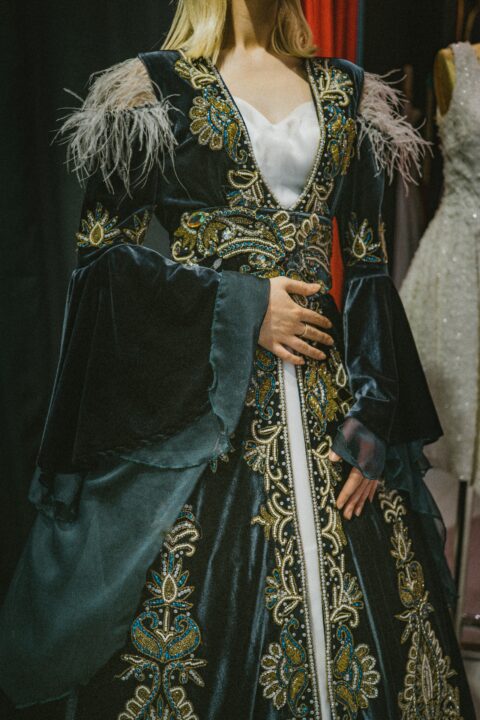Turkey, popularly known as the country where East meets West (that is, a junction points for the East and the West), is made up of two parts – the European parts and the Asian parts, with each part having either a Western or Eastern influence on the country’s culture.
Turkey is a large and diverse country with a lot of traditions and ways of dressing. If you are traveling through Turkey, the first thing you will notice is the distinct way people dress. From the east to the west, Turkey has its own variable fashion industry.
However, Turkey is divided into seven regions and each region has different ethnic groups and provinces with different traditional clothing. The two major ethnic groups in Turkey are the Kurdish and the Arabs.
The differences in the way people dress are mostly due to the different ethnic groups and the combination of European and Asian customs so the various types of traditional Turkish clothes are specific to a particular ethnic group. Turkey, as well as other places, is a rich example of how foreign policies can influence dress styles and how traditional clothing styles can evolve over time.
Despite these changes, Turks have always tried to maintain their Turkish identity by wearing traditional Turkish clothes, thereby distinguishing themselves from others but even with all the efforts made, there are still visible changes in a few cities. For example, if you go to the cities in Asian Turkey, you will see the traditional Turkish dress that some people wear in those cities.
However, If you go to cities like Istanbul in the European part of Turkey, you will see that most people wear completely European clothing, and some others wear modernized Turkish traditional dress.
If you are interested in traditional Turkish clothing, by reading this article, you will find useful information about the traditional Turkish clothes that people wore in the past and how they have evolved into the clothes they wear today.
Turkish men and women have a common style of clothing with a few differences. Men wore baggy trousers, usually tucked into socks, paired with a vest or jacket called yelek and an embroidered belt called kusak. Men also wore a range of headdresses, like the fez or turban, before they were abolished.
Women wore similar baggy trousers called şalvar but theirs were more brightly colored and often paired with gowns of different lengths or a chemise called gomlek. Both men and women wear socks with shoes or sandals. One significant feature of Turkish traditional clothing is that it is usually embroidered and embellished with little or much designs and worn with jewelry distinct to each regional style.
10 Turkish traditional Clothing
1. Salvar or Dimiye
Şalvar is the most famous Turkish traditional clothing. Salvar is a baggy pair of trousers that are tight at the waist, gathered tightly at the ankle, and worn by both men and women. Salvar can be made from a variety of materials, including silk, cotton, or wool, and often features intricate embroidery or colorful prints.
Salvar is suitable for everyday wear and for formal occasions and each region has its own overall style of salvar, especially for men and women. In some regions, the şalvar for men is usually tucked into their socks and paired with a traditional shirt, a loose coat called a jubba is worn over the şalvar or other garments can be worn under it.
Men’s şalvar can be dark in color, depending on preference. Men’s salvar is really popular in eastern Turkey and is often worn by Kurdish men. Women’s şalvar is usually brightly colored and worn with upper garments of varying styles and lengths. The şalvars are also of varying degrees of bagginess and are gathered at the ankle with bright colors and floral prints.
In rural parts of Turkey, salvar is still a popular piece of traditional Turkish clothing because it is very comfortable to wear. In big cities like Istanbul, women prefer şalvars as well but style them in a more modern way.
2. Yelek
The yelek is a traditional Turkish vest or waistcoat. It has a significant history and a place in the hierarchy of traditional clothing dating back to the time of the Ottoman Empire, which spanned from the 13th to the early 20th centuries.
The yelek was a style of jacket with hanging sleeves that was popular among those of lower social status. They were often short waistcoats and could be worn by both men and women.
In the past, yeleks were traditionally made from a variety of high-quality fabrics such as silk, velvet or brocade and featured very ornate decorative embroidery that contrasted the main textile. characterized by intricate designs, luxurious fabrics, and meticulous craftsmanship.
Yeleks often boasted of intricate designs and vibrant colors, with various adornments like gold threads, pearls, and precious stones, depending on the wearer’s social status. Today, yelek is commonly used to refer to a style of sleeveless waistcoat. It was typically worn over a shirt or under a caftan, serving both functional and decorative purposes.
3. Kaftan
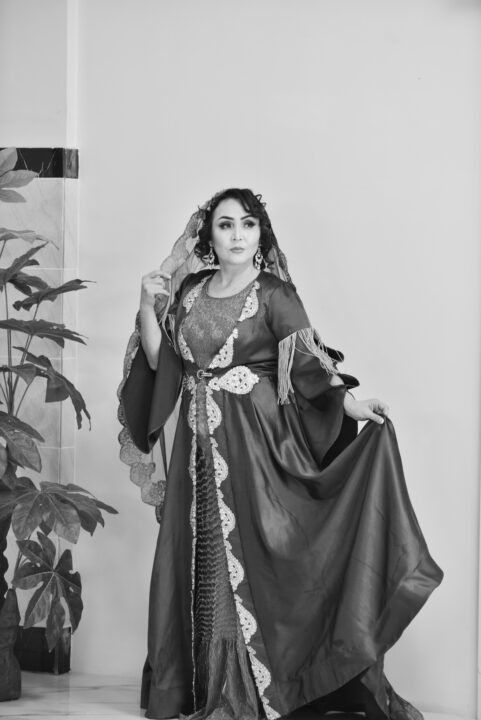
The kaftan is an outerwear piece like a long jacket or robe with or without sleeves that hugs the waist and flows below the knees with a style unique to the wearer. There are different styles a kaftan can be made in, either sequined or unadorned.
The kaftan dress is an iconic piece of clothing that is part of Turkish national dress and is mostly worn by men and women in the Southeastern Anatolia Region.
Kaftan is unisex clothing commonly worn by the wealthy in the Ottoman period because of its intricate embroidery and fur-linen. It is very versatile and can be worn with practically anything. For women, it is usually paired with a headdress, socks and shoes for a more feminine look. A man’s kaftan is often without embroidery, paired with a şalvar, a shirt and a kerchief around the waist.
4. Bindallı
Bindallis is another long gown or jacket worn by Turkish women. Bindallı is usually confused with kaftan because they look really similar but there are certain differences. For example, bindallis are more simple and unadorned, without embroidery. Actually, the main difference between kaftans and bindallis is that bindallıs have a thinner fabric than kaftans.
Although kaftans are unisex clothing, women mostly wear kaftans and bindallı during their henna night.
5. Fez
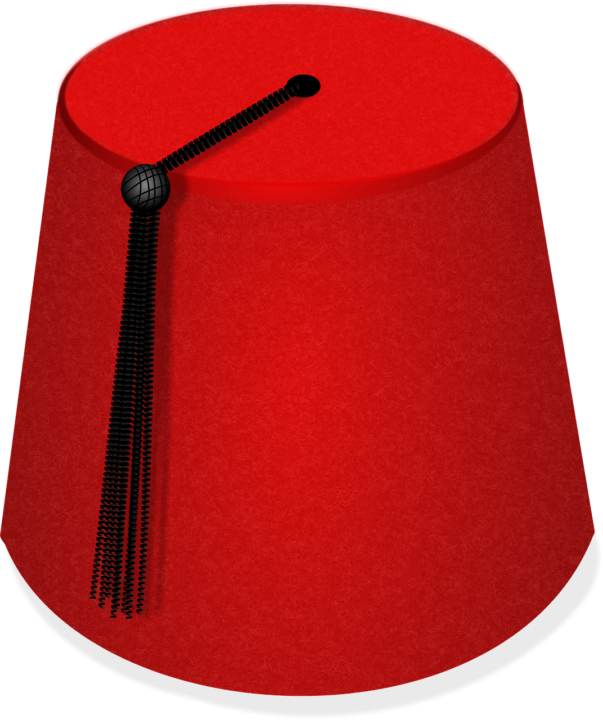
Fez was one of the most popular Turkish menswear styles in the Ottoman Period. The fez is a red or crimson headgear, that is part of traditional Turkish clothing. It is a hat in felt with a rigid conical or cylindrical shape, usually with a black tassel above and black strings hanging on top of it. The fez and turban have enjoyed great success among the different populations and regions of the Ottoman Empire.
However, fezzes and turbans were abolished by law in 1925, and most peasants now wear cloth caps.
6. Gomlek
The gömlek is a type of chemise or shift dress worn by women with gowns or robes.
7. Pestemal
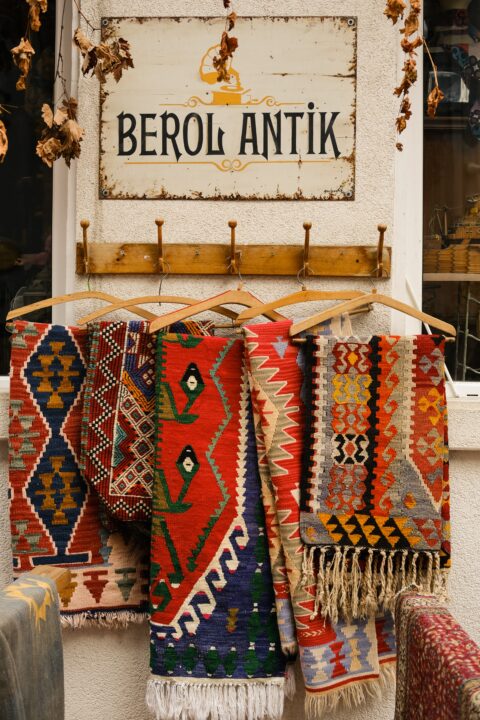
Peshtemals are striped linen towels usually worn around the neck of women. Peshtemals are traditionally woven on handlooms from natural fibers such as cotton, linen, or even silk.
Peshtemals are typically flat, thin and highly absorbent, like a towel. They are a lengthy piece that can go down to a woman’s legs and are about the same size as a beach towel. It is mostly characterized by stripes or checks with hand knotted fringes at both ends.
However, there are different variations in each region of Turkey, renowned for their unique weaving techniques, patterns, and colors. They are mostly considered to be the traditional clothing of women in the Black Sea region of Turkey.
8. Kesan
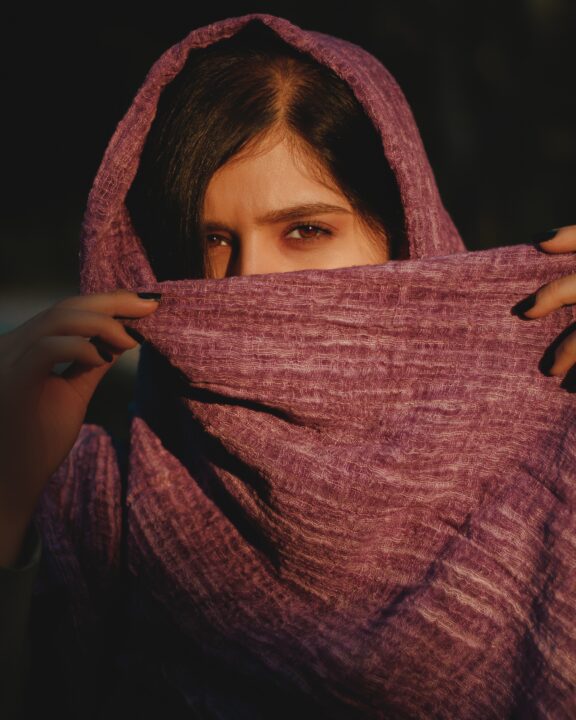
Kesan is the traditional clothing of Turkish women. It is a shawl usually wrapped around the waist that covers the head, torso and face. Sometimes the shawl is made of black brocade and heavily embroidered. It can be paired with socks, shoes or slippers and is mostly worn by women in the Black Sea Region of Turkey.
9. Kalpak/ yashmak
Kalpak is a hat worn by women, usually with various designs. While yashmak is a head covering that also covers the face and is usually paired with the rest of women’s traditional costumes. Both headdresses are highly decorative and are used at certain events.
10. Aprons and kerchief
Aprons and kerchiefs are typically significant in Turkish traditional clothing. Women usually wear an apron on their dresses or beneath their robes, while kerchiefs serve different purposes, either as a belt or a neckwear. These pieces of clothing is usually embellished with intricate embroidery
A Brief History of Turkish Traditional Clothing
History plays a great role in describing and emphasizing how changes in culture came about. The Turks loved their traditional clothing and had no desire to change it until after the Ottoman period.
The Ottoman Empire formed pretty much all of Turkey’s cultural and traditional heritage. Even hundreds of years after the fall of the Ottoman Empire, Turkish traditional clothing still has a lot of features typical of those days. They used their clothing to cover and protect the body and as a symbol to show their tribal, political, and religious identity.
At the time, each social class was wearing a different costume according to their status in society, whether they were a sultan, basic citizen, peasant or scholar.
In 1925, such clothing was declared illegal by the government of Turkey. The new Turkey established by Atatürk became increasingly secular and more Western-oriented, which led to the reformation of the Turkish language, religion and the replacement of traditional clothing.
After that, people began to wear more European style clothing and very few people in Turkey wear traditional clothing in their day-to-day lives.
Although women retained the national dress and kept the tradition more carefully than men, They still use a lot of pieces of traditional Turkish clothing more often. But men usually use European style of clothes or mix some elements of Turkish clothing with western pieces of attire.
For example, men use caps instead of turbans but that was because he made a big change in the traditional Turkish clothes by making it mandatory to wear Western clothes and banning the wearing of turbans. Turkish men have increasingly adopted the styles and somber colors of European male dress.
However, the famous Turkish baggy trousers are still quite common in rural areas and among the poorer town dwellers, but the traditional and colorful shift, jacket or waistcoat are rare. But, irrespective of any influence of foreign fashion styles, Turkey’s traditional clothing always dominates ceremonies like weddings and circumcision.
Today, people in different regions of Türkiye wear different clothes. People who live in the eastern parts of Turkey and neighboring Asian countries have preserved their clothing culture. People who live in the western regions of Turkey and adjacent European countries completely imitate the European clothing culture.
